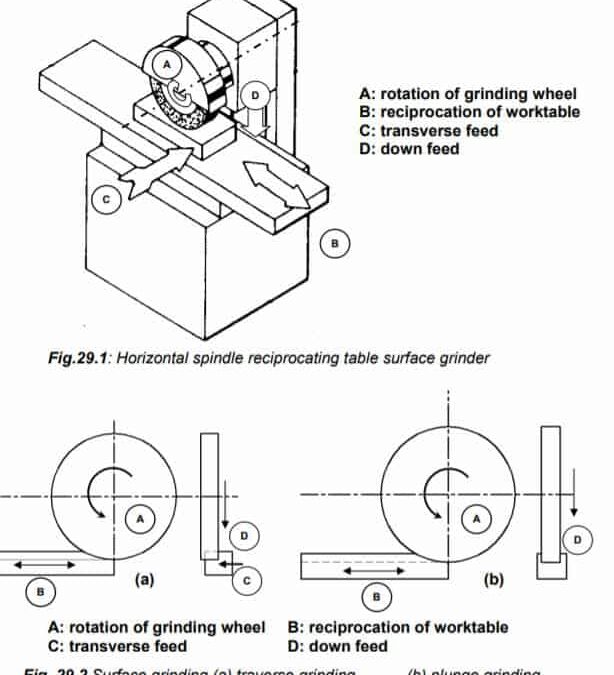Takes a meticulous approach to precision with an exploration into the diverse world of surface grinding machines. While akin to milling machines, these powerful tools are designed primarily for grinding flat surfaces, yet some possess the capability to craft contour surfaces with formed grinding wheels.
There are four distinctive types of surface grinding machines, each characterized by the movement of their tables and the orientation of grinding wheel spindles.
Horizontal Spindle Reciprocating Table Grinder:
- Illustrated in Figure, this machine orchestrates various motions for the grinding action. A disc-type grinding wheel imparts the grinding force with its peripheral surface. The versatility of both traverse and plunge grinding makes this machine a versatile choice.
Vertical Spindle Reciprocating Table Grinder:
- This grinding machine, depicted in Figure 29.3, mirrors the grinding operation seen in face milling on a vertical milling machine. A cup-shaped wheel grinds the workpiece over its full width, utilizing the end face of the wheel. This design allows more grits in action simultaneously, resulting in a higher material removal rate compared to peripheral wheel grinding.
Horizontal Spindle Rotary Table Grinder:
- Surface grinding in this machine, as shown in Figure 29.5, follows the principle of facing on a lathe. While it has limitations in accommodating workpieces, the ability to swivel the worktable allows for the production of concave, convex, or tapered surfaces on individual parts.
Vertical Spindle Rotary Table Grinder:
- Figure 29.7 illustrates the grinding principle in this machine, which is predominantly suitable for small workpieces produced in large quantities. Often equipped with two or more grinding heads, this production-focused machine facilitates both roughing and finishing in a single rotation of the work table.
Click here to learn more about Toolcraft Corp’s capabilities.
Photo and article with all rights reserved, courtesy of learnmech.com





